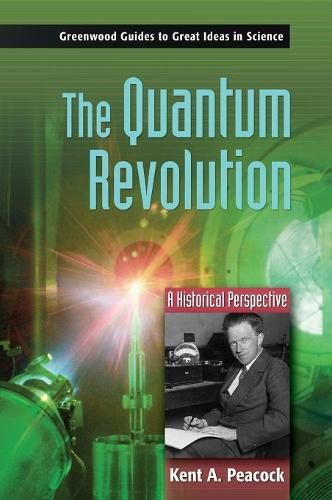
The Quantum Revolution: A Historical Perspective
(Hardback)
Publishing Details
The Quantum Revolution: A Historical Perspective
By (Author) Kent A. Peacock
Bloomsbury Publishing PLC
Greenwood Press
1st December 2007
United States
Classifications
Tertiary Education
Non Fiction
530.12
Winner of Oustanding Academic Title 2009 2007 (United States)
Physical Properties
Hardback
240
Description
Quantum mechanics is one of the great success stories of modern physics, making sense of the very small just as Einstein's theory of relativity made sense of the very large. But, for most students, the ideas that make quantum mechanics powerful can be confusing and counterintuitive. This volume in the Greenwood Guides to Great Ideas in Science series provides a history of quantum mechanics from the early breakthroughs of Planck and Einstein, at the beginning of the 20th century, to the present frontiers of quantum computing and quantum gravity. The approach is entirely non-technical, and is aimed at the general reader who may not have much mathematical background but who has a strong curiosity about some of the most important developments in modern science. Quantum Mechanics: A Historical Perspective traces the history of this powerful theory, including: ; The early discoveries by Max Planck and Albert Einstein regarding the quantization of radiation ; The early quantum theory, including Neils Bohr's theory of the atom ; The birth of modern quantum mechanics through the work of Heisenberg, Schrodinger, Born, Dirac and others ; Applications of quantum mechanics in chemistry, nuclear physics, electronics, and many other areas ; Recent work in quantum computation and quantum information theory The book emphasizes the fact that despite the great success of quantum mechanics, many exciting intellectual frontiers remain open for further researchers to explore. It includes a glossary, a timeline, and a bibliography of accessible resources for further research.
Reviews
This delightful volume should be on the shelf of just about every undergraduate library; hopefull, students will find it and give it a read. A well-constructed index is included. Recommended. General readers; lower- and upper-division undergraduates. * Choice *
There are appealing and relevant sidelights on the lives and relationships of the physicists and on the technologies that depend on our advances in understanding. The long lasting debates on the foundations and interpretations of quantum mechanics are discussed in deatil; the arguments of Einstein, Bohr, Schrodinger, von Neumann, Bohm, Bell, and many others; the problems of entanglement; and the possibility of nonlocality. For those who are interested, this discussion is an outstanding feature of the book. The time line, glossary, recommendations for further reading, and list of references are valuable additions. * SB&F *
The Quantum Revolution can serve as a resource to guide students through the work that was done by scientists such as Einstein, Bohr, Heisenberg, Pauli, Dirac, Schrodinger, and others.[E]specially recommended to those who are interested in researching the atomic theory, the development of nuclear weapons, and nuclear physics. * NSTA Recommends *
The book is designed for the reader who has an interest in quantum theory and its history. The text does not contain numerous mathematical formulas, which makes it easier for the nontechnical person to understand. This book is recommended for public and college libraries. * ARBAonline *
Author Bio
Kent A. Peacock is Professor of Philosophy at the University of Lethbridge, in Alberta, Canada. Peacock received his Ph.D from the University of Toronto and has also taught at the University of Western Ontario. He has published in philsophy of science, metaphsics of time, and ecological philosophy, and he spends much of his time trying to understand why it is still not obvious that quantum mechanics should be true.
